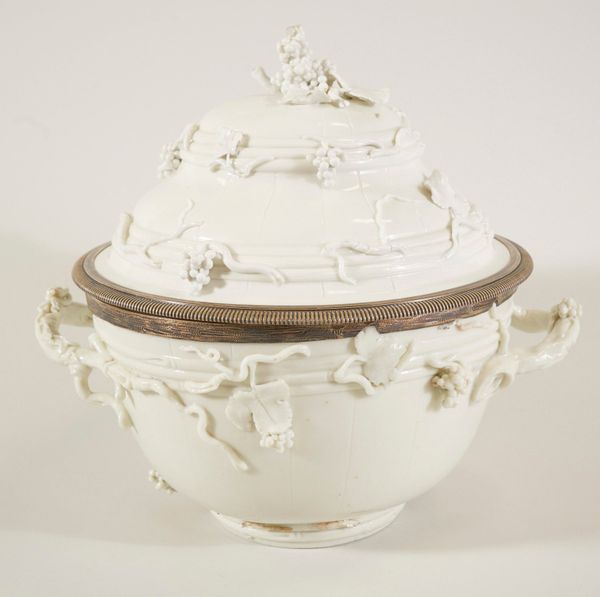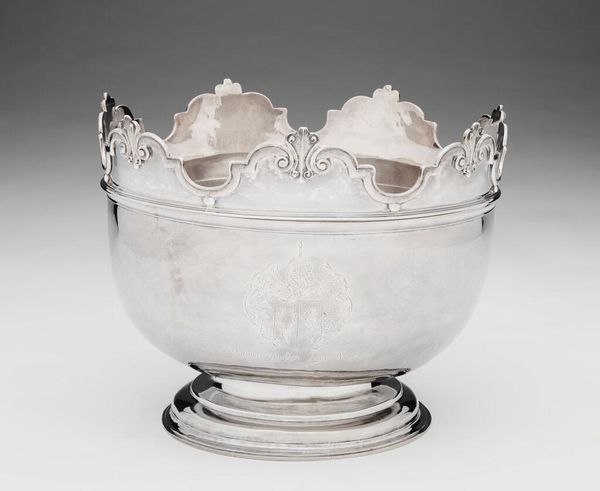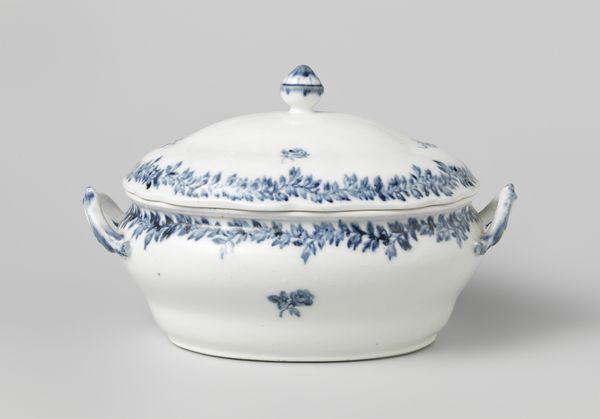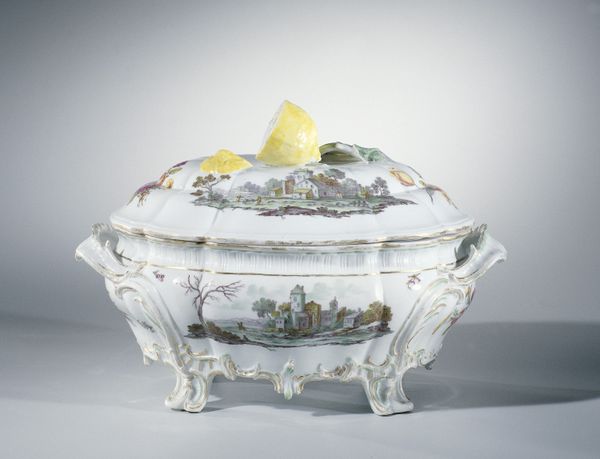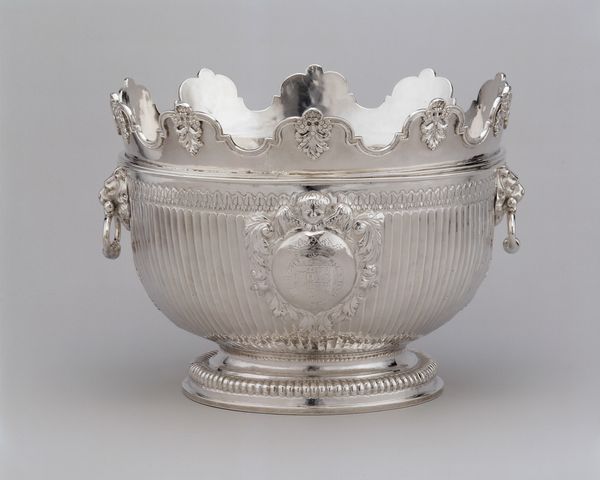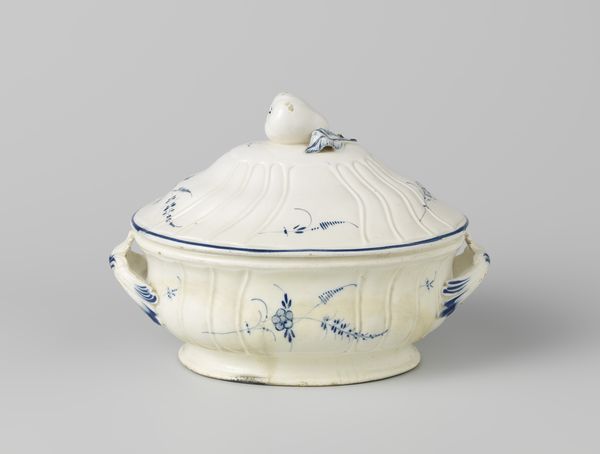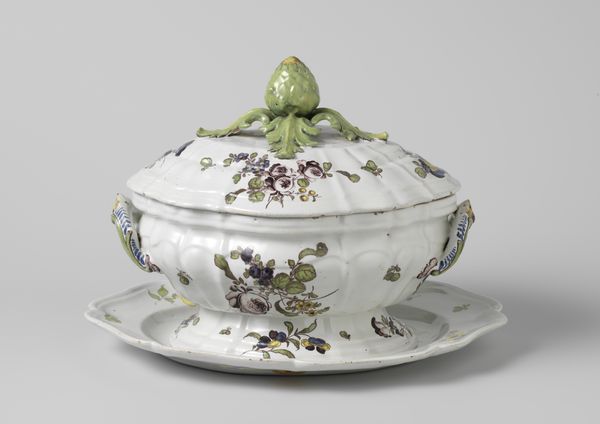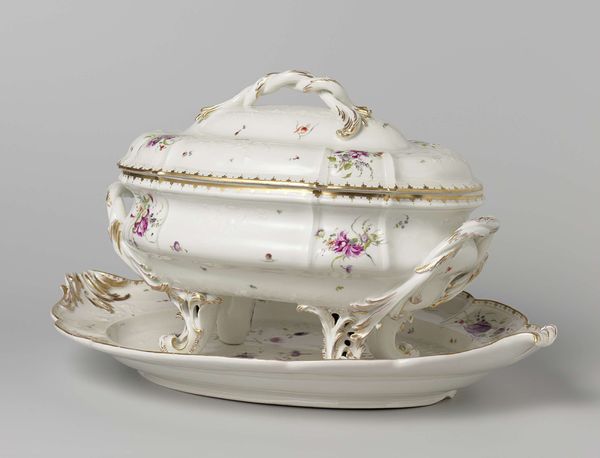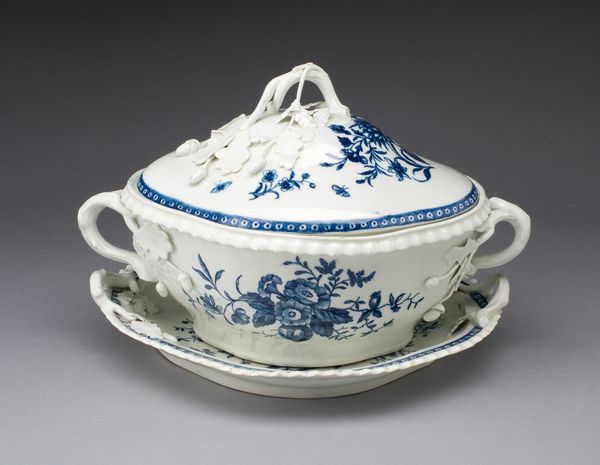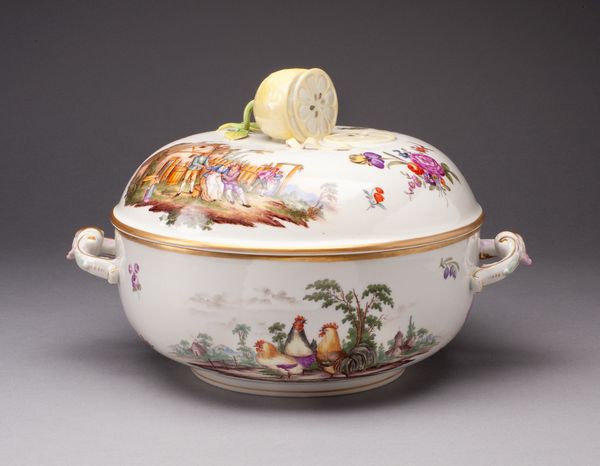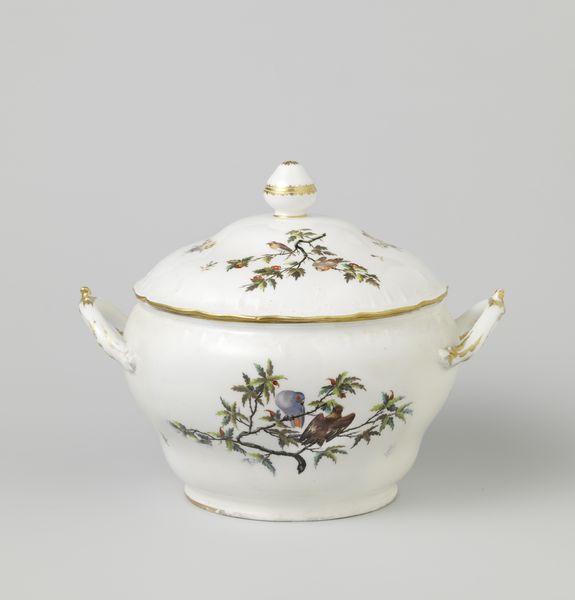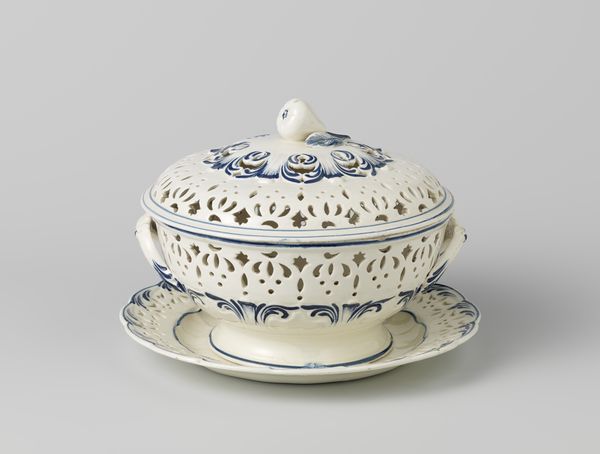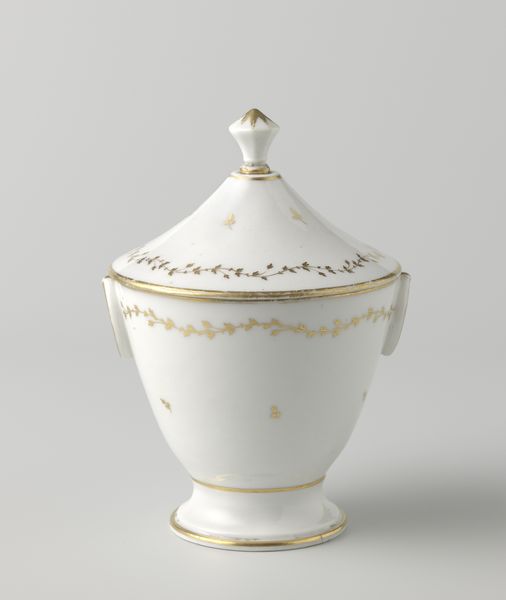
Dimensions: Overall (with handles): 4 5/8 × 6 1/2 in. (11.7 × 16.5 cm)
Copyright: Public Domain
Editor: This stunning object is a porcelain porringer with a cover, also known as an Écuelle, created by the Cozzi Manufactory between 1770 and 1780. I’m really struck by how the all-white stoneware emphasizes the delicate, almost sculptural, details of the flowers climbing all over it. What stands out to you? Curator: What jumps out is how this porringer, despite its functionality, acted as a powerful social signifier in the late 18th century. Think about it – porcelain was incredibly valuable, controlled by elite circles, and displayed wealth and status. This wasn't just a bowl; it was a declaration of refinement. Notice how it is exhibited at the Met now. How do you think that changes its value? Editor: Hmm, that's an interesting point. In the Met, its function is almost completely erased. It's viewed solely as art now, divorced from its original social context. Curator: Exactly! And what about the Rococo style, those floral embellishments? Consider how these delicate flowers relate to broader socio-political themes. Was it a commentary on class? Gender roles perhaps? Editor: Perhaps the delicate floral design reflects a desire for pastoral themes. It is a sign of the elite yearning for a simpler life while still surrounded by luxury. Does its exhibition today serve to emphasize historical divides in any way? Curator: Absolutely. Exhibiting it in a museum reinforces the power structures that enabled its creation. We are placing a value, not only on its beauty but also on its historical and economic significance. Thinking about this Cozzi piece encourages us to consider how the simple display of an object creates a statement of class and history. Editor: I hadn't considered how actively a museum displays, and so recreates, power dynamics. I learned a lot today, and that's an insight I won't forget.
Comments
No comments
Be the first to comment and join the conversation on the ultimate creative platform.
